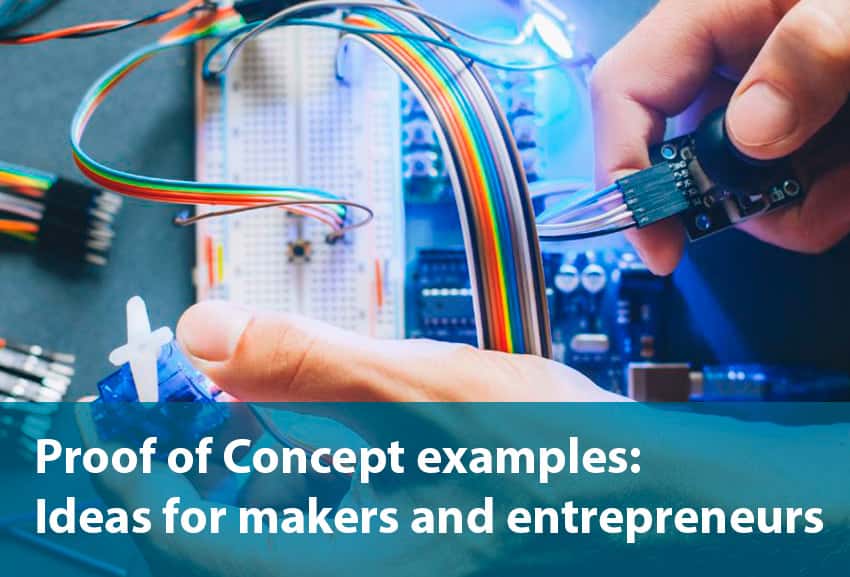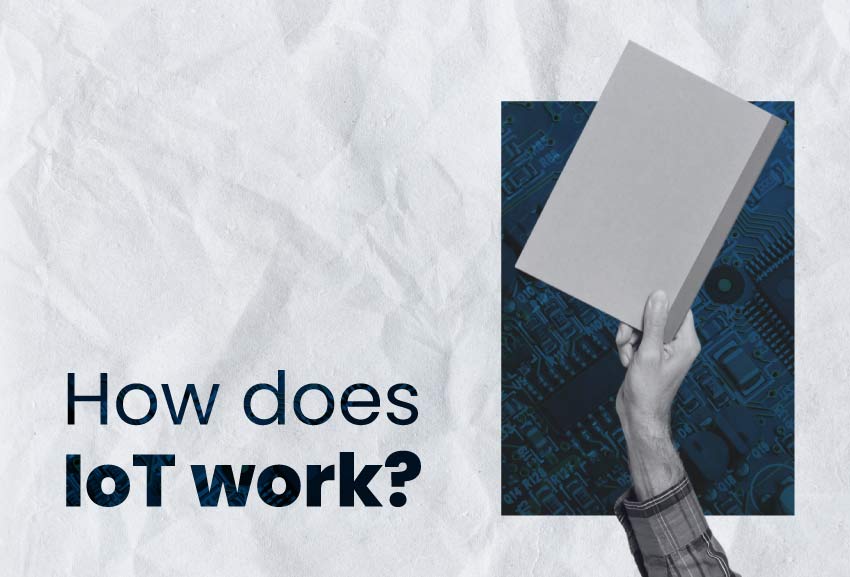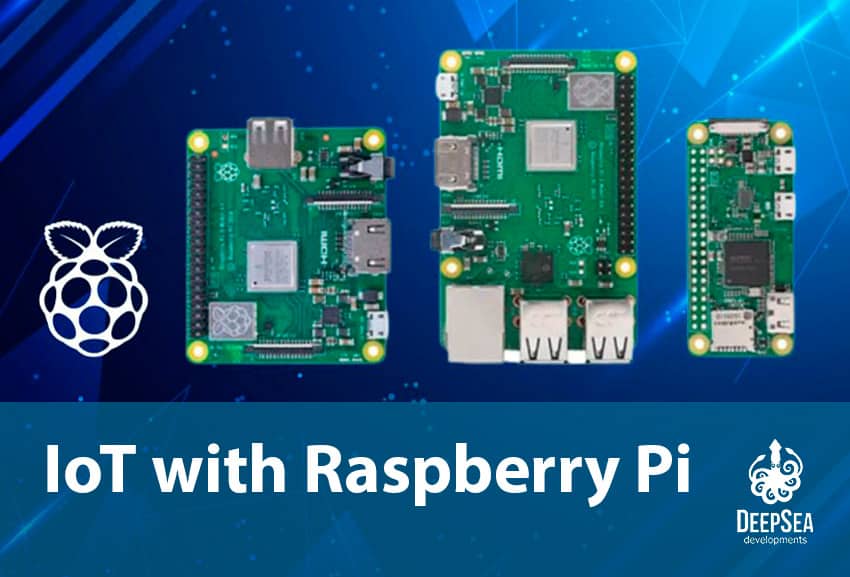If you are interested in creating a new IoT device (why is IoT important), you will have already found out there are several steps to follow in order to take one business idea to a finished product. But, how do we know how to ask an engineer or the guys in charge of providing the hardware development service about the idea we want to build?
That’s why we decided to write this article, in which you will understand what a proof of concept is, and you will get some ideas for specific industries (IoT use cases) that are developing new Internet of Things products.
What is a Proof of Concept?
A proof of concept (PoC) is a process that is carried out to demonstrate or prototype the feasibility and practical potential of a particular idea, concept, or project. This is a preliminary stage in the development process where the focus is on validating key aspects of the concept before committing to full-scale implementation.
What is the main goal of a PoC? It’s to provide evidence that the idea can be implemented effectively and will likely achieve its intended objectives; see the Proof of Concept success criteria article to find out how it can be done.
This stage happens way before IoT programming or hardware development. And we have had the opportunity to speak with several people that come to us with just an idea, but maybe not so clear to know if they are interested in going further in both technical and budget aspects..
What are some Proof of Concept examples?
As we promised at the beginning, here are some examples of Proof of Concept you could check to get some inspiration for your ideas. We decided to show some PoC examples by different industries:
Energy sector
Inside the world of IoT energy solutions we can find several alternatives that look forward to energy efficiency.
PoC example in smart energy:
A smart meter that can measure energy consumption inside a house and store energy as well. The device can be accessed through a mobile app and provide information about energy consumption, potential malfunctions in the electrical grid and recommendations.
Of course, there may be several smart meters in the market that fulfill one or all of the characteristics mentioned above, but understanding how a PoC may look like on paper is a good way to present your new idea or requirement to an engineering team.
Another example for a proof of concept could be implementing a small-scale microgrid powered by renewable energy sources that can measure energy consumption levels in a sector.
With such knowledge, you can add or remove features you would like your device to have, and the team will get ready to start testing the feasibility of your product.
PoC example in Fleet Management:
Imagine a small GPS device that can help you track a fleet of trucks in real time. This device will have the capacity to monitor the status of the engine, the battery, and measure braking patterns of the vehicle.
This example of proof of concept can be found in IoT fleet management use cases, in which businesses offer tracking capabilities to logistics companies with the help of a fleet device.
Example of Proof of Concept in smart farming:
In the realm of smart farming solutions, a PoC could be something that involves drones for precision agriculture. By using drones equipped with sensors and cameras, farmers can monitor crops with unprecedented detail, optimizing resource usage and increasing yields.
Entrepreneurs can also draw inspiration from a PoC for a device that allows farmers to track all machinery that is being used in a farm, and detect potential failures in the equipment, or prevent theft of their assets.
These are just a few examples of scalable solutions that could be created for precision farming.
Electric vehicles:
Nowadays you see the rapid increase of EVs in the market, governments are fostering such growth thinking about greener energies for the planet.
What’s the matter with EVs? There aren’t enough charging stations for supplying the increasing number of EVs in the market. And many countries are working hard to overcome this EV charging station scarcity.
There arises a new alternative, which is a portable EV charging solution. The POC example here could be something like, a device that allows to charge the EV at any moment of the day without having to rely on public charging stations, the portable charger must have the capability to adapt to several EV models.
Consumer electronics PoC examples:
Consumer electronics witnesses an innovative PoC with the incorporation of augmented reality (AR) in retail. By overlaying virtual information onto the physical shopping experience, this concept enhances consumer engagement and decision-making. Entrepreneurs can explore AR applications to revolutionize the way consumers interact with products.
On the other hand, imagine all that can be done regarding wearable IoT devices. You can find many options in the market that already offer smart bands and smartwatches.
An interesting example of proof of concept in this area could be wearables that contain flexible electronics. This concept allows for the creation of wearable devices that conform to the body’s movements, offering enhanced comfort and versatility.
Entrepreneurs and makers can explore flexible electronics to push the boundaries of wearable technology. And create innovative devices (See IoT in sports).
Why is a Proof of Concept important?
Let’s see some key characteristics and purposes of a Proof of Concept, specially talking about developing new hardware or IoT products:
Feasibility testing: A PoC helps assess whether a concept or technology can be implemented in a real-world scenario. It allows stakeholders to evaluate the technical, financial, and operational feasibility of the proposed idea.
Risk reduction: By creating a small-scale prototype or demonstration, a PoC helps identify and mitigate potential risks and challenges early in the development process. This can prevent unnecessary investment in ideas that may not be viable.
Showcasing core functionality: The focus of a PoC is on demonstrating the essential functionalities of the concept. It doesn’t need to be a fully polished or complete product but should be sufficient to illustrate the core features and benefits.
Gathering feedback: A Proof of Concept provides an opportunity to collect feedback from relevant stakeholders, including potential users, investors, or industry experts. This feedback is valuable for refining and improving the concept before moving forward.
Decision-making tool: It serves as a tool for decision-makers to evaluate whether the concept aligns with the organization’s goals and if it warrants further investment (see product crowdfunding) and development.
Technology validation: In cases involving new technologies, a Proof of Concept is crucial for validating the technical aspects of this idea. It demonstrates the practicality and effectiveness of implementing a specific technology or combination of technologies.
Iterative process: After the initial demonstration, the concept may be refined and retested based on feedback and insights gained during the proof of concept stage.
Bear in mind that PoC vs Prototype vs MVP are different things. Each phase has a specific goal in the development process.
Key Steps for crafting a successful Proof of Concept:
Embarking on a proof of concept journey requires careful planning and execution. Here are key steps to ensure the success of your PoC:
- Define clear objectives: Outline the goals and objectives you aim to achieve with your PoC. What problem are you solving, and how will your concept address it?
- Identify key metrics: Establish measurable metrics to evaluate the success of your PoC. Whether it’s cost reduction, improved efficiency, or enhanced user experience, define how success will be quantified.
- Select appropriate technologies: Choose the technologies that align with your concept. Whether it’s IoT, AI, sensors, GPS or a combination, ensure your chosen technologies suit the goals of your PoC.
- Create a prototype: Develop a prototype that showcases the core functionalities of your concept. This doesn’t have to be a fully polished product but should demonstrate the feasibility of your idea.You can check some prototype examples to get a better understanding of how they may look. Also, here are some articles to give you more ideas on how to proceed with your project:
- Gather feedback: Seek feedback from relevant stakeholders, potential users, or industry experts. Use their insights to refine and improve your concept. This will be a great advantage for identifying the way you will start implementing an IoT marketing strategy for your products.
- Iterate and refine: Based on feedback and test results, iterate on your prototype. Refine the concept to address any identified shortcomings or enhance its capabilities.
We hope these examples encourage you to test and implement your ideas. A Proof of concept serves as a way to showcase the potential of innovative projects. However, bear in mind that this step is just an introduction to the product development process, the prototype phase (we recommend fostering a maker’s culture) will be crucial for making the product functional and testing its functionality on a higher level.
If you have a great idea in mind you would like to test and develop, we invite you to get in contact with us, click on the button below.






